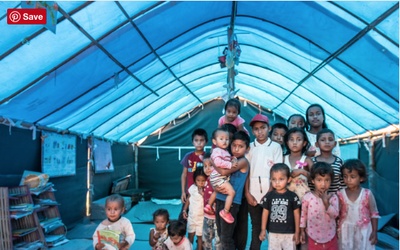Ensuring mental health and well-being in an adolescent’s formative years can foster a better transition from childhood to adulthood
Adolescence is a critical and formative period in which individuals begin their transition from childhood to adulthood. Ensuring that adolescents are fully supported in all facets of life is critical for fostering this transition and laying the foundation for a healthy and productive remainder of their lives.
While there are many factors that significantly affect adolescence, mental health and well-being have often been overlooked. Mental health issues constitute a major burden of disease for adolescents globally. It is estimated that up to one in five adolescents will experience a mental disorder each year, self-harm is the third leading cause of death for adolescents (see Figure 1) and depression is among the leading causes of disability [i]. Despite this, adolescent mental health and well-being have often been overlooked in global health programming. Yet, in the Sustainable Development agenda, mental health is being more critically recognized as an important component of the global health agenda. Sustainable Development Goal (SDG) target 3.4 [ii] aims to reduce premature mortality from non-communicable diseases through prevention and treatment as well as promoting mental health and well-being. The inclusion of mental health in the Sustainable Development agenda, is a crucial step toward reducing preventable deaths among adolescents.
For adolescent boys and girls, self-harm is among the top five causes of death
Despite global recognition of importance of mental health, momentum for programmatic and policy actions has been slow. There is common agreement that one contributing factor to the lack of progress is the lack of empirical data on mental health and especially mental health among adolescents. Two thirds of countries do not have any data for mental disorders and, for those countries which do have data, these data are often unavailable for children and adolescents [iii]. Data on mental health among adolescents, especially in low- and middle-income countries, is urgently needed. The data used at present to extrapolate estimates for the prevalence and burden of adolescent mental disorders are based on few studies, which often sampled small and non-representative populations, thus offering only a very narrow snapshot of the situation for adolescents globally [iv]. The true burden of mental health disorders among adolescents could be direr than estimates suggest.
Systematic generation of data and evidence on the prevalence and burden of mental health conditions among adolescents is an essential step towards identifying needs and appropriately tailoring programmes and interventions for the promotion and effective resource allocation at national and subnational levels.
The field of mental health measurement has a long history of screening and diagnosing symptoms using a variety of validated tools in clinical and school settings. However, there is a gap of validated tools and prevalence data for measurement of adolescent mental health conditions at the population level.
UNICEF, with the support of experts, is leading an effort to develop a data collection tool to capture information on adolescents’ mental health at a population level in low and middle income countries[v]. Validation and adaptation of the tool in different contexts will involve a mix of qualitative and quantitative approaches, including clinical validation of depression, anxiety and suicidality [vi]. The final outcome will be a tool for use in household surveys to assess the prevalence of mental health conditions among adolescents aged 10-14 and 15-19 that will be disaggregated by demographic, socio-economic characteristics, and subnational geographic areas to capture equity patterns.
References
[i] WHO and partners (2017) Global Accelerated Action for the Health of Adolescents (AA-HA!). Geneva 2017.
[ii] United Nations Sustainable Development Knowledge Platform, https://sustainabledevelopment.un.org/sdg3.
[iii] Kapungu, et al. 2017. Gendered influences on adolescent mental health in low-income and middle-income countries: recommendations from an expert convening. The Lancet Child & Adolescent Health, Volume 2 , Issue 2 , 85 – 86.
[iv] Erskine HE, Baxter AJ, Patton G, Moffitt TE, Patel V, Whiteford HA, Scott JG. 2017. The global coverage of prevalence data for mental disorders in children and adolescents. Epidemiol Psychiatr Sci. 2017 Aug;26(4):395-402. doi: 10.1017/S2045796015001158. Epub 2016 Jan 2017.
[v] UNICEF 2018 ‘A conceptual framework and road map to measuring mental health among adolescents’.
[vi] UNICEF 2019 ‘MMAP Overview and Instrument Development. New York 2019’.

















































































































